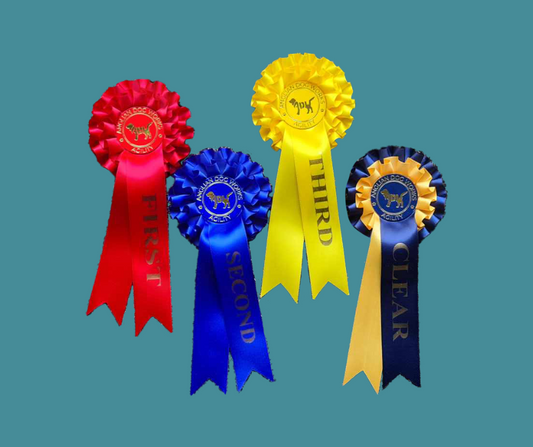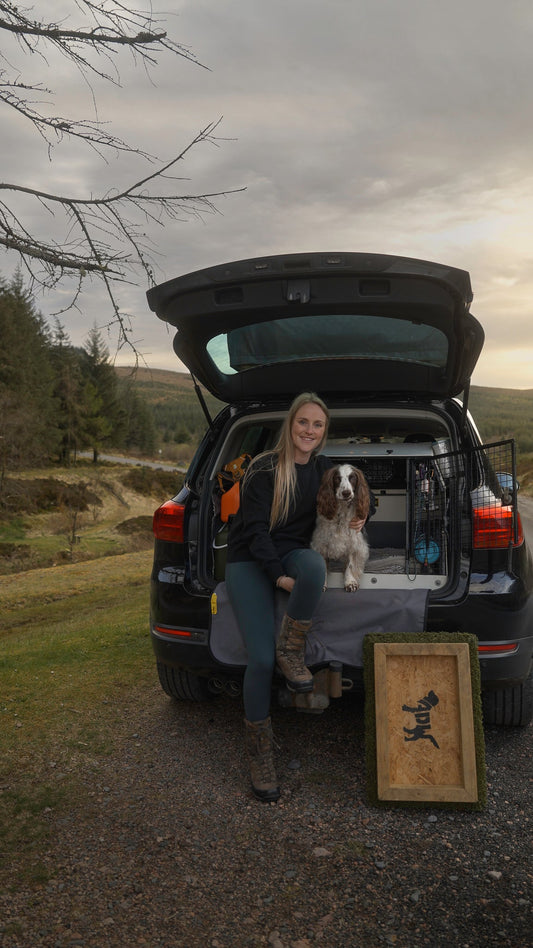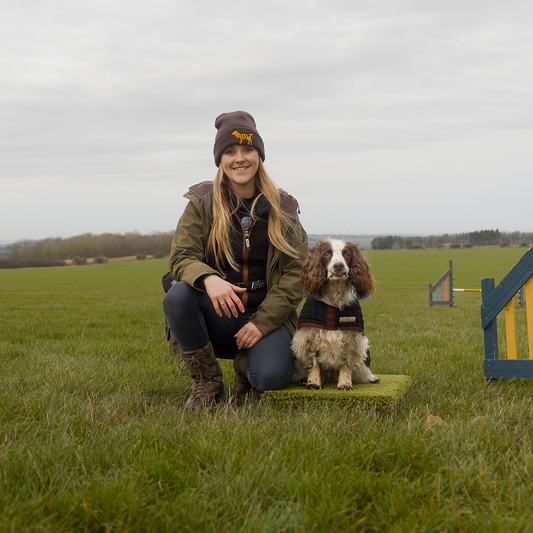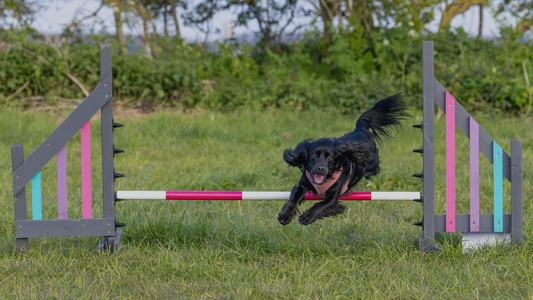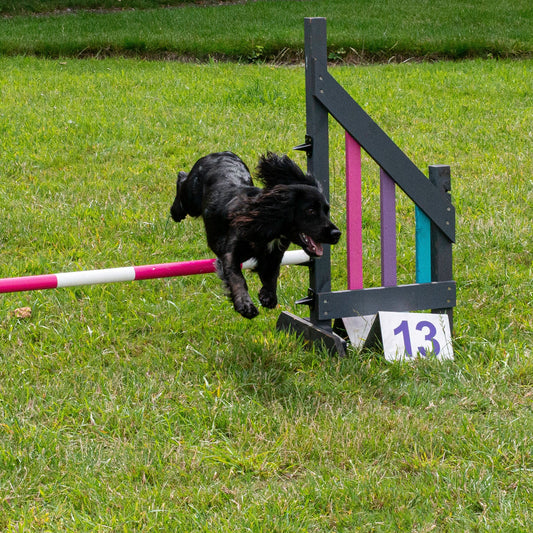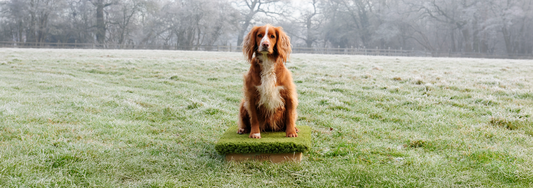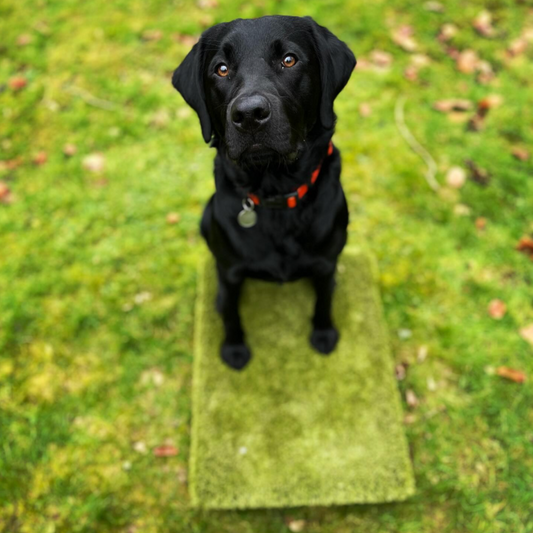How to Train a Spaniel to Retrieve and Stop Running Away
Maggie, a lively Cocker Spaniel, recently got her and her owner in quite a pickle. While out on a walk, she came across a pigeon that had been hit by a car. Before her owner could intervene, she grabbed it and wouldn’t let it go.
So, what do you do in a situation like this?
The Immediate Moment Isn’t a Training Opportunity
When your dog grabs something they shouldn’t—like Maggie with her pigeon—the focus should be on safely managing the situation. Training comes later. In Maggie’s case, her owner allowed her to carry the pigeon home and then swapped it for a bowl of food. While Maggie was eating, her owner was able to dispose of the pigeon safely and reached out for advice. Together we formulated a plan for future training.
Why Immediate Training Won’t Work
When your dog is in high-arousal mode, like when they’ve grabbed something exciting, they’re not in the right mindset for learning. Trying to train in that moment can lead to frustration for both you and your dog. Instead, focus on:
-
Keeping everyone safe.
-
Getting the item off your dog as calmly as possible.
-
Making a mental note to address this behaviour in a structured training session later.
Why Train a Formal Retrieve?
It is genetically hard wired into gundog breeds to have and to hold, so them picking things up is inevitable.
A formal retrieve is one of the most valuable skills you can teach your spaniel. It ensures your dog knows exactly what to do when they pick something up: bring it straight back and hand it over willingly. This eliminates the dreaded game of “keep away” and helps your dog see retrieving as a positive, rewarding experience. Here’s why a formal retrieve is beneficial:
-
Clarity for Your Dog: They learn a clear and consistent sequence for retrieving items.
-
Safety: Your dog is less likely to run off with dangerous or inappropriate items.
-
Control: It’s easier to manage situations where your dog picks up something they shouldn’t.
Common Challenges Without a Formal Retrieve
Without proper training, many dogs see retrieving as a game of independence. This can lead to issues such as:
-
Playing “keep away” with dangerous objects.
-
Reluctance to release items.
-
Damaging or destroying items they pick up.
Breaking Down the Stages of a Retrieve
To teach a formal retrieve, it’s important to break it into clear stages that your dog can understand. Progression should be gradual, and each step should be positively reinforced to build confidence and enthusiasm.
Stage 1: The Hold
Start by teaching your dog to confidently hold an item in their mouth. Begin with a lightweight and familiar object, such as a soft toy or dummy.
-
Offer the item to your dog and use a cue like “hold” as they take it into their mouth.
-
Once they hold the item, mark the behaviour with a verbal cue like “good” and immediately reward them.
-
Gradually extend the duration they hold the item before using a release cue like “give.” Keep sessions short and positive.
Stage 2: Picking Up the Item
Once your dog is confident holding the item, introduce the concept of picking it up from the ground. Place the item in front of your dog and encourage them to pick it up using the same “hold” cue.
-
Reward your dog when they pick up the item and hold it without dropping.
-
Gradually increase the distance between your dog and the item to build their confidence.
Stage 3: The Return
Now that your dog can pick up and hold the item, it’s time to teach them to bring it back to you. Start with short distances and guide your dog back to you using a recall cue like “here” or “come.”
-
As your dog approaches, use the “give” cue to encourage them to release the item into your hand.
-
Reward immediately to reinforce the behaviour.
If your dog has been trained to use a Place Board, you can utilize it as a target to help them return to a consistent location during retrieves. This provides clarity and structure, especially for beginners.
Stage 4: Generalizing the Retrieve
Introduce a variety of objects to ensure your dog understands the retrieve sequence applies to any item. Use different shapes, textures, and sizes, such as:
-
Fur covered balls.
-
Rubber dummies.
-
Articles with fur such as sheepskin.
Ultimately, you can progress to using feather. Dried pelts can be purchased, or you can ask a gamekeeper for cut wings. Attach these to a dummy using the elastic from an old sock. This method allows you to start with more fabric covering the feathers, which can help prevent your dog from plucking instead of returning. Gradually trim the fabric to expose more of the feather as your dog becomes confident. Additionally, using sock elastic avoids the risk of snapping, which can occur with elastic bands and potentially harm your dog’s confidence.
Key Tips for Success
-
Consistency is Key: Use the same cues and reward system throughout the training process.
-
Short Sessions: Keep training sessions brief to maintain your dog’s focus and enthusiasm.
-
Patience Pays Off: Progression should be gradual; don’t rush through the stages.
-
Positive Reinforcement: Always reward your dog for correct behaviour to build confidence and trust.
Real-Life Example: Maggie’s Training Journey
After the pigeon incident, Maggie’s owner used the structured stages above to teach her a formal retrieve. By starting with basic holds and gradually progressing to more complex retrieves, Maggie learned to pick up, hold, and return items as second nature. Now, whether it’s a ball on a walk or a training dummy, Maggie knows exactly what to do.
Conclusion
Training a formal retrieve is one of the most rewarding skills you can teach your spaniel. It not only strengthens your bond but also ensures your dog’s safety and reliability in real-world situations.
Ready to Start Training?
https://angliandogworks.com/collections/adw-dog-training-cambridge


